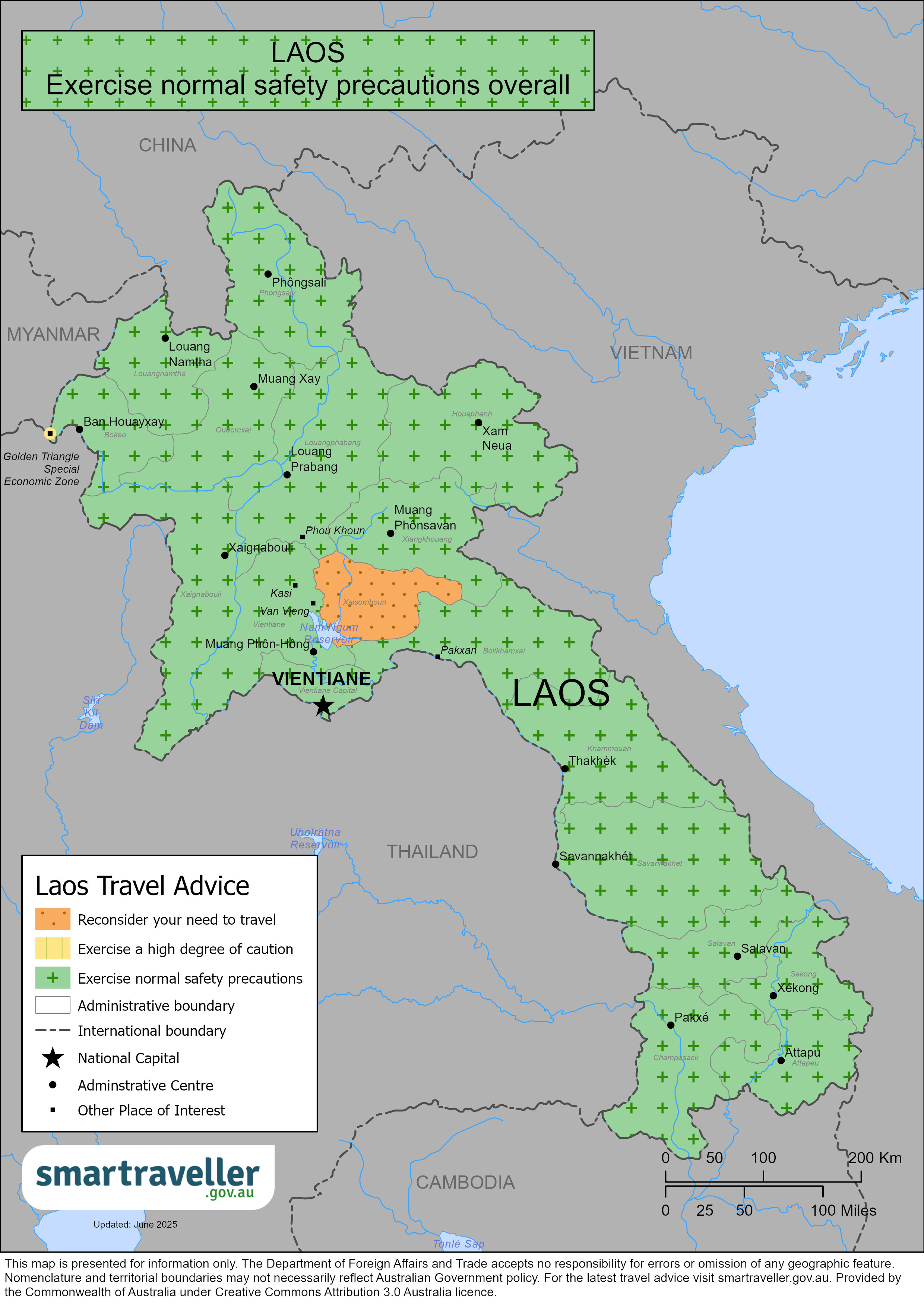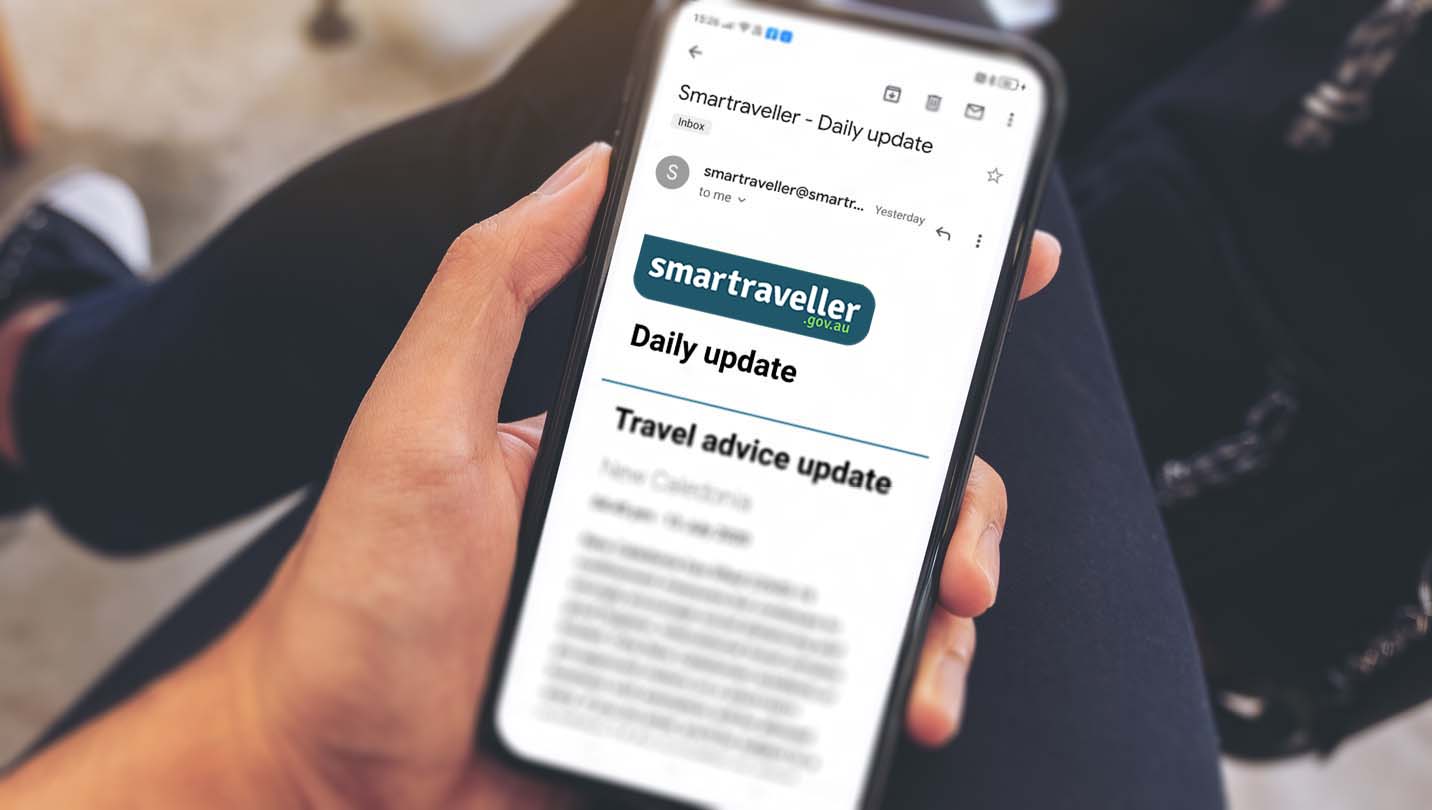Violent opportunistic crime such as robbery occurs in Laos, including in:
- Vientiane
- Vang Vieng
- Luang Prabang
- Bokeo Province along the border with Myanmar, Thailand and around the Golden Triangle Special Economic Zone (GTSEZ).
Petty crime
Petty crime is common, especially in tourist areas. It may include:
- thieves on motorbikes snatching bags
- theft from guesthouses
In the lead-up to local festivals, there's an increase in theft and violent crime. This includes Lao New Year in April.
Thieves often operate in pairs, with one person creating a distraction while the other steals unguarded items.
Thieves sometimes target foreigners in rural and remote locations, especially along:
- Route 6 (near the town of Sam Neua, Huaphan Province)
- Route 7 (Phou Khoun to Phonsavanh)
To protect yourself against petty crime:
- carry only what you need — leave valuables in a safe location
- don't place bags or valuables in the basket of your bicycle or motorbike
- be aware of pickpockets in tourist areas and crowds
Violent crime
Local media has reported violent muggings involving guns and knives in Vientiane.
Gun ownership is illegal. However, illegal guns are sometimes used, causing deaths and injuries.
The region east of Vang Vieng in Xaisomboun province has historically seen several shooting incidents and explosions. This has led to multiple deaths and injuries, including among civilians.
To protect yourself against violent crime:
- be aware of how much alcohol you consume
- be conscious of your surroundings
- pay attention to your personal security, especially at night and when riding a bike or motorbike
- be alert to people trying to distract you
When you're out at night:
- stick to well-lit public areas, especially in tourist cities and towns
- avoid travelling alone
- use well-travelled, well-lit roads
- be alert to crime along rural roads, especially Routes 6 and 7
Sexual assault
Travellers have been sexually assaulted, including in Vientiane, Vang Vieng and Luang Prabang.
Learn about reducing the risk of sexual assault overseas before you travel. Know what help is available to victims.
HIV/AIDS and sexually transmitted infections are more common in Laos than in Australia. If you're a victim of violent crime, especially rape, get immediate medical help. Contact the Australian Embassy in Vientiane as soon as possible. See Local contacts.
More information:
Scams and fraud
Australians have reported hire companies demanding high payments for existing damage to motorbikes.
Hire companies sometimes arrange for motorbikes to be stolen from the renter. The renter is forced to pay thousands of dollars to compensate. This can amount to the value of a new motorbike plus lost earnings.
To avoid these scams:
- use a well-known vehicle hire company
- take date-stamped photos of your vehicle before you hire it to record any existing damage
- don't provide your passport as a deposit or guarantee for hiring a motorbike
ATM and credit card fraud are also common. To protect yourself against this kind of fraud:
- check for skimming machines before using ATMs
- take care not to expose your PIN
- keep your credit card in sight at all times, including during transactions
- monitor your bank statements
Employment Scams
Employment scams have occurred in Laos, including in Bokeo Province along the border with Myanmar, Thailand and around the Golden Triangle Special Economic Zone (GTSEZ).
Before signing an employment contract for work, verify the true nature of the work you're offered.
Cyber security
You may be at risk of cyber-based threats during overseas travel to any country. Digital identity theft is a growing concern. Your devices and personal data can be compromised, especially if you're connecting to Wi-Fi, using or connecting to shared or public computers, or to Bluetooth.
Social media can also be risky in destinations where there are social or political tensions or laws that may seem unreasonable by Australian standards. Travellers have been arrested for things they have said on social media. Don't comment on local or political events on your social media.
More information:
Kidnapping
Kidnapping can happen anywhere, anytime, including destinations that are typically at lower risk. The Australian Government's longstanding policy is that it doesn't make payments or concessions to kidnappers.
More information:



